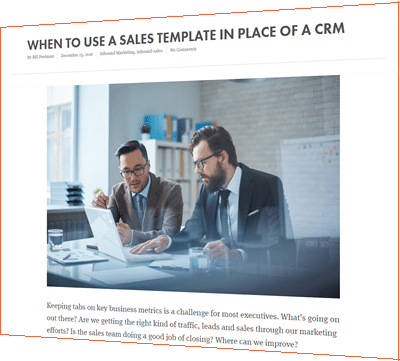Yesterday we discussed why you should offer eBooks and whitepapers, but how to you write and publish one? It’s not the easiest thing in the world to do; if it were, most of us would be published authors already. We do know it can be done — by any size company — because we’ve done it. We were a 2-person agency when we published our first eBook. Whenever possible, we recommend that you put together a team who are responsible for producing long-form content, but me, myself, and I can be the team when you’re a one-man band. Here’s the basic process:
- Have the team meeting at the very beginning, so that everyone has a stake in the outcome. First determine if there will be a primary writer or if several team members will each write a different section. If you are a solopreneur, it’s probably a moot point, unless you have multiple personalities and one of them wants to take on the job.
- Determine the subject matter and the purpose of the eBook, based on your buyer persona(s) and metrics. Consider your most popular blog posts, the most-viewed pages on your website, and any other data you may have that point to a topic that will resonate with your readers.
- Write an outline. This can be done several ways:
- Write collaboratively.
- The primary writer writes the outline and the team reviews and revises it.
- The person responsible for each section writes the outline for that section and the team puts them all together into a cohesive whole.
- Write the eBook in Word, Google Docs, or whatever word processing application your company uses. If team members are sharing the writing, make sure styles are consistent. We like Google Docs for collaborative work because you can add notes, suggestions, footnotes, etc., that don’t change the text – they show up in the margins. Two people can work in the document at the same time. All changes are automatically saved in real-time, not just when the document is closed. And don’t worry – the revision history is available from the Edit menu.Don’t be too concerned about nuances in formatting at this point, since you will probably be laying the final document out in a different application. Only if you are working in Word and intend to publish the eBook directly from Word, do you need to be concerned with the details of formatting at this stage. Of course you do want to format major sections, titles, bullets and numbers, etc., so that you can get a sense of the flow of information.
- Review, revise and rewrite as necessary to make the document into a cohesive whole. If you are writing solo, we recommmend asking a friend or colleague to read and comment. No one, not even the greatest writers, can be objective when reading their own work.Writing eBooks is less formal than, say, scholarly dissertations, so most of us will manage without hiring a structural editor. We do recommend, however, that you pay close attention to copy editing. Your credibility and perceived professionalism will suffer if you overlook spelling and grammatical errors, or if the flow of information doesn’t move in a logical progression from one sentence, paragraph, or section to the next.
- Lay the book out in an application where you can publish it as a PDF. NEVER send a raw Word document out for download. Many companies use Adobe InDesign, as do we, but it is expensive and takes some time to learn it. If you don’t have access to InDesign, Microsoft PowerPoint is a program most of us have a decent working knowledge of and it’s easy enough to learn if you don’t. It’s also pretty standard in most offices and allows you to save the final document as a PDF. If you don’t have access to PowerPoint, you can write the final document in Word and save it as a PDF, but the quality of the images might suffer a bit.
- Once it’s in semi-final form, have the document proofread again, making sure all the external and internal hyperlinks work.
- Develop CTAs and landing pages and then start promoting your eBook everywhere.
If you are ready to write and publish an eBook to add to your content marketing strategy, check out our eBook on how to write eBooks in PowerPoint. It’s a handy little guide that simplifies the process so you can concentrate on writing.





